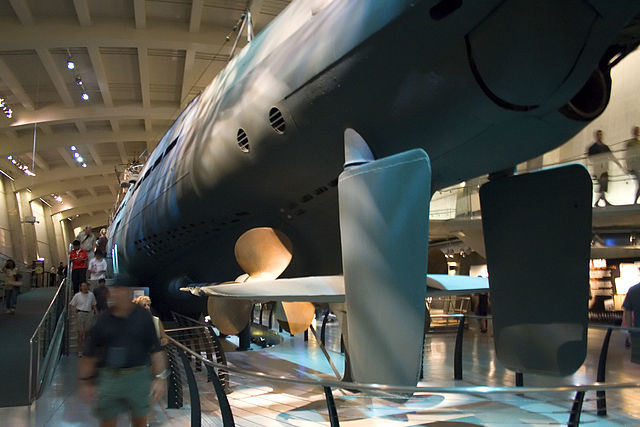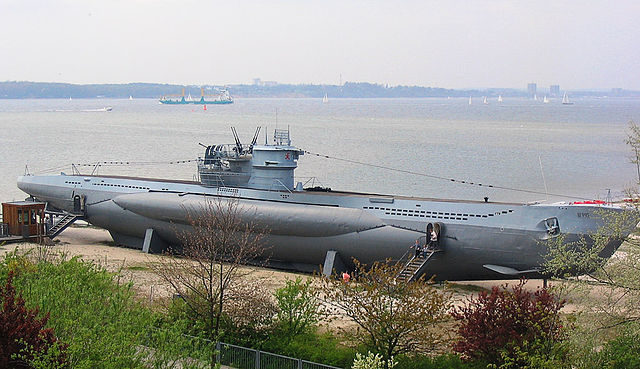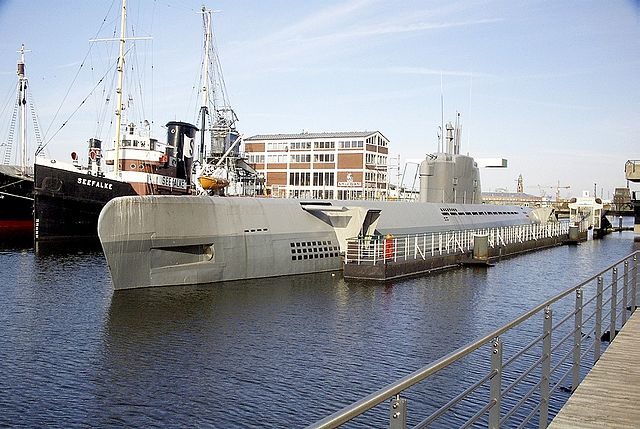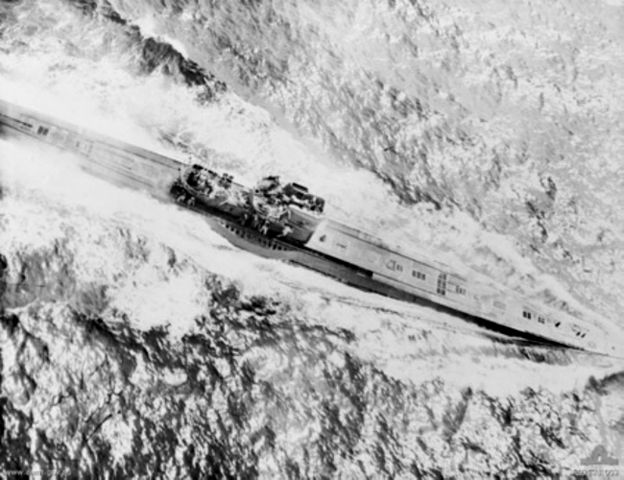During the course of WWII, the Third Reich employed more than 1,200 submarines or U-boats. The Allies managed to capture only six of them in action. Out of that number, five remain – four of which wait for us in American, British and German museums. Here’s a quick run through their at times stirring histories.
U-505

U-505 is a German Type IXC U-boat, first launched on 25 May 1941. On 1 February 1942, it was assigned to the 2nd U-Boat Flotilla. Throughout her career, she conducted twelve patrols. During her fourth patrol, on the northern coast of South America, an RAF plane bombed U-505, causing her immense damage and killing one watch officer.
The low-level attack, though, didn’t end quite as planned. The British aircraft got hit by shrapnel and crashed into the sea, killing the crew. Submarine’s commander, Kptlt. Peter Zschech, ordered an evacuation, but the servicemen managed to save her. She was consequently dubbed the ‘most heavily damaged U-boat to successfully return to port’ in WWII.
On 1 July 1943, U-505 returned to service. Successive attacks and technical subversions by the French workers who worked on her reparations led to a series of botched patrols. During her tenth patrol, Kptlt. Zschech cracked under pressure and entered history as the first submariner in history to commit suicide underwater in response to the stress of a prolonged depth charging, and the first (and thus far only) officer to commit suicide while commanding a warship in battle.
During her last mission, on 4 June 1944, the US Naval forces successfully captured the U-505. It was their first such capture at sea since the War of 1812. On board, they found codebooks, Enigma machine, and other secret materials that later helped the Allied codebreakers. The capture and the 58 prisoners were kept as a top-secret until after the war.
The U-505 now resides at the Chicago Museum of Science and Technology.
U-995

The story of U-955 is a bit less dramatic. She was a Type VIIC/41 U-boat, commissioned on 16 September 1943. The U-955 conducted nine patrols, sinking exactly the same number of Allied ships. On 8 May 1945, she surrendered to the British forces in Norway. The Brits gave her away to the Norwegian ownership in 1948, where she served in the Royal Norwegian Army until 1965.
The Norwegian government offered her to its German counterpart for a symbolic price of one Deutsche Mark. The German government declined the offer, but the German Navy League took from there and in October 1971 placed the U-955 at Laboe Naval Memorial, near the town of Kiel.
U-2540

Construction of U-2540, a Type XXI submarine, began on 28 October 1944. Fuel shortages prevented her from ever seeing action. On 5 May 1945, Germans scuttled her. She remained in the Baltic seabed for the following 12 years until she was raised and overhauled. On 1 September 1960, she found her first purpose as a test boat and a testbed for technical innovations.
In May 1980, it collided with the German destroyer Z-3 and subsequently discharged from use. German Ministry of Defense put her on sale and she found her new home in the German Maritime Museum at Bremerhaven.
U-534

This submarine’s fate was for a period wrapped in mystery. The U-534 was a Type IXC/40 U-boat was built in 1942 and assigned to the 4th U-boat Flotilla for training purposes and weapons testing. In 1944, she was repurposed for weather reporting. After escaping a few RAF attacks, and successfully shooting down one British fighter plane, it was taken off duty due to some system malfunctions.
By the time it was finally repaired, the war was nearing its end. On 5 May 1945, Admiral Dönitz of German forces in Denmark, Germany, and other areas ordered a partial surrender south of the 56th parallel. Since the U-boat found itself just a few kilometers north of the parallel, her commander decided to keep on sailing north. Soon, they were spotted and attacked by two British fighter planes. The crew managed to take down one plane and evade nine depth charges. The tenth was a direct hit and the U-boat sank.
Forty-one years later, Aage Jensen, a Danish wreck hunter discovered its hull and the legend of a Nazi submarine that defied the order to surrender started spreading. Soon, it became widely believed that the submarine attempted the escape because it was carrying gold. Karsten Ree, a Danish media millionaire, financed U-534’s rising in 1993, but the only treasure found was the hull itself.
Three years later, she was transported to the Birkenhead Docs in England, as part of the Warship Preservation Trust’s collection. After the museum went under, the U-534 was cut in five pieces for transportation purposes and transferred to Liverpool. Since 2009, the U-534 is displayed in four segments in an open-air waterfront park on the Mersey River.
